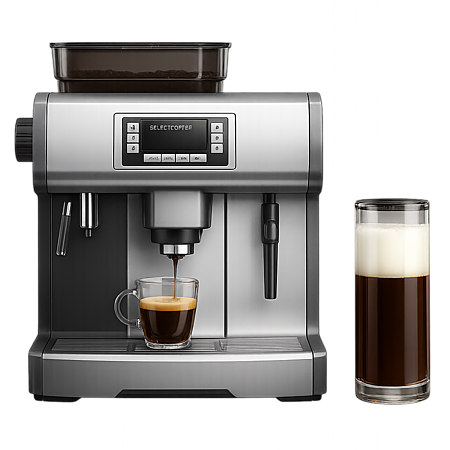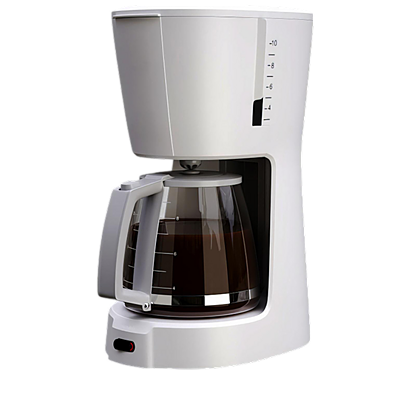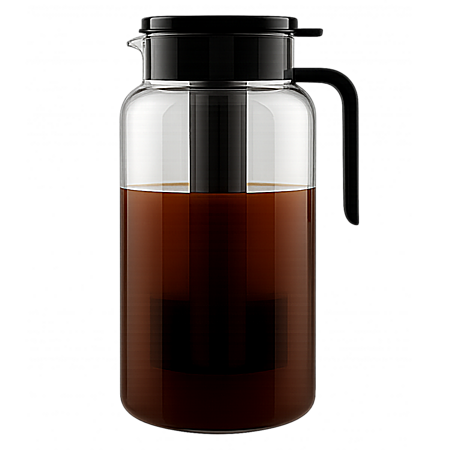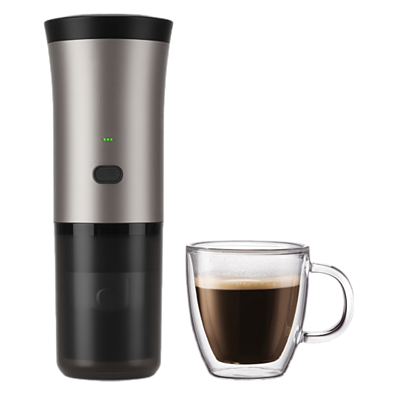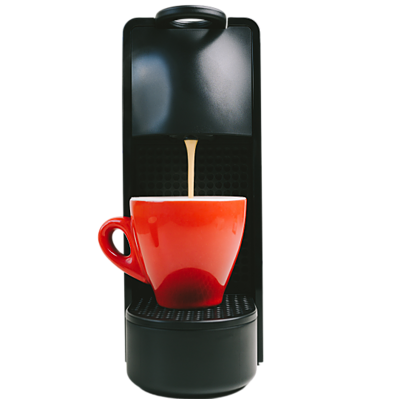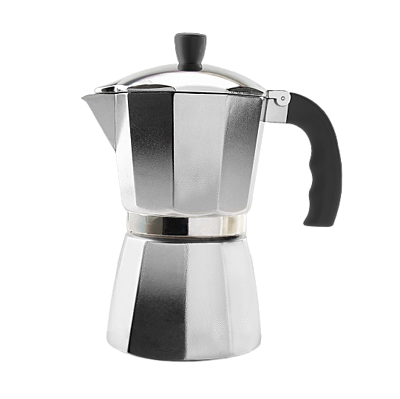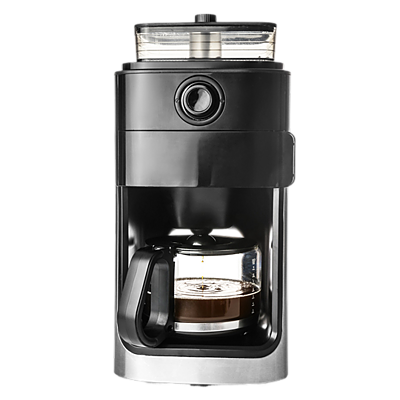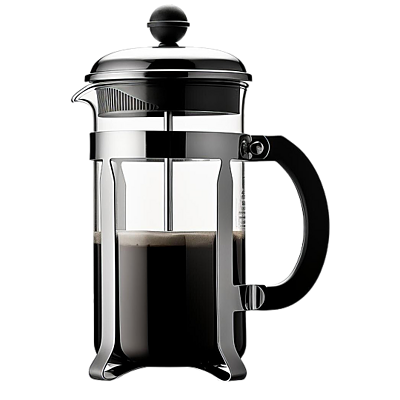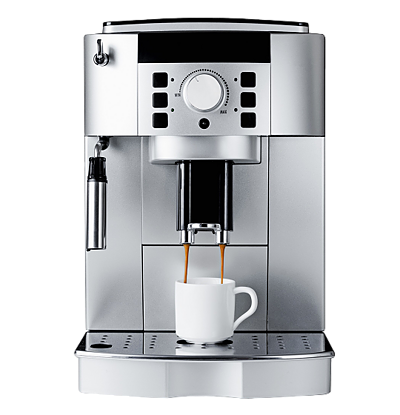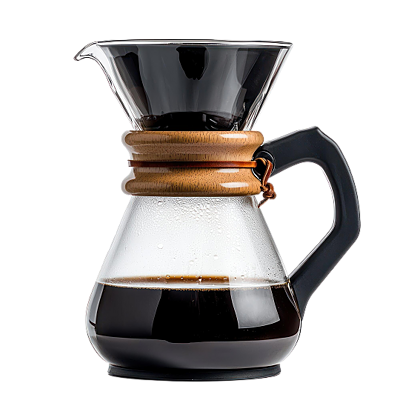Do you drink coffee every day or just occasionally? Whether you prefer pour-over, drip, or espresso, choosing the right coffee maker takes more thought than it seems. With countless models and features on the market, it’s important to find one that suits your brewing preferences, counter space, time, and budget.
I’ve created this comprehensive buyer’s guide to help you cut through the noise and choose with confidence. I’ve evaluated coffee makers based on technical specs, performance, durability, usability, and flavor quality, so you’ll find more than just popular picks.
Popular Coffee Maker Types (and When to Choose Each)
Quick tip: Picture your busiest morning. The machine that feels realistic then is probably the one you’ll actually use every day.
Drip Coffee Makers
Drip machines are the preferred choice for many households. They are perfect for brewing multiple cups of coffee at one time, plus they’re simple, reliable, and often, budget-friendly.
If your morning routine includes a carafe ready for the whole family to enjoy (or even several cups all to yourself!), this is a solid choice. However, they do offer limited control over brewing variables like water temperature or extraction time, so may not satisfy espresso enthusiasts. If you want to know more about drip coffee makers, see my detailed guide.
Single-Serve Pod Brewers (e.g., Keurig, Nespresso)
If convenience is king in your household, single-serve pod machines deliver. All you need to do is pop in a pod, press a button, and you’ve got coffee in seconds. They’re great for people who live alone, offices, or if you want to try different flavors but don’t want to actually tinker with a machine.
Do keep in mind that the cost per cup is higher over time, and the environmental impact of discarded pods is worth considering, unless you go with recyclable and reusable options. If you’re curious about single-serve brewers, I have a detailed buyer’s guide for them here.
Espresso Machines
An espresso machine gives you cafe-quality drinks like lattes, cappuccinos, and shots of pure espresso. They offer greater control over flavor extraction, grind size, and milk frothing. They come in manual, semi-automatic, and fully automatic versions, but all come with a steep learning curve, a higher cost, and more frequent cleaning needs. If you’re a fan of espresso and are curious about these machines, learn more about them here.
Bean-to-Cup / Grind and Brew Coffee Maker (Fully Automatic Machines)
These fully automatic machines combine grinding and brewing in one unit, giving you fresh coffee with minimal effort. They’re perfect for coffee drinkers who want barista-level coffee without needing to master the technique.
Most include programmable settings and automatic cleaning functions, though some may come with a higher price tag and need more counter space. I have a full guide to buying grind and brew machines here, if you’re interested in learning more.
French Press / Manual Brewers
Manual brewers like the French press are perfect if you enjoy hands-on brewing. French press offers rich, full-bodied flavor and doesn’t require electricity, making it ideal for travel, camping, or weekend mornings.
While affordable and portable, they do require more manual effort and aren’t ideal when mornings are busy. Learn more about French press coffee makers and how to choose the right one here.
Cold Brew Makers
Cold brew is prized for its smooth, low-acid profile and is a favorite for iced coffee drinkers. These makers steep coarse grounds in cold water for 12-24 hours first, which results in a concentrated brew. While the flavor is unmatched, the wait time and single-use nature makes it less versatile. If you’re curious about cold brew coffee makers, check out my full, detailed guide on them here.
Pour Over Coffee Maker
Pour-over brewing is popular among coffee drinkers. With complete control over water flow, temperature, and bloom time, this method can highlight subtle tasting notes and complex aromas.
It’s also affordable, compact, and doesn’t use electricity, but it does require time, patience, and technique. Like the French press, it’s not ideal for busy mornings. I did a detailed guide on choosing and buying the right pour over coffee maker for your needs here, so check it out if you’re interested.
Travel Coffee Maker
If you find yourself always on the go, travel coffee makers are a compact and electricity-free brewing solution. This makes them perfect for camping and commuting, since they are also durable, lightweight, and often come with built-in mugs. They do brew smaller quantities and may need pre-ground coffee.
Interested in travel coffee makers? I have a full guide on choosing the best one for yourself here.
Percolator
Percolators brew strong, bold coffee, making them perfect for large gatherings, campers, or fans of no-fuss coffee. But beware: they can easily over-extract, resulting in bitter coffee, and they lack the precision needed for specialty brews. If you’re a fan of percolators, check out my detailed guide on buying one here.
How to Buy a Coffee Maker: The Complete Guide
Regardless of which type you go with, some features make a real difference in day-to-day use. Here are the big ones.
Brewing Temperature and Consistency
The temperature at which coffee brews is a hidden but essential part of getting a great cup. Ideally, water should be between 195°F and 205°F during brewing. If it’s too cool, below 195°F, the coffee ends up under-extracted, tasting sour, weak, or flat. If it’s too hot, above 205°F, you’ll get over-extracted coffee that tastes bitter and harsh.
What matters just as much as hitting the right temperature is how steady the machine keeps that temperature throughout the entire brew. Even small temperature swings can cause uneven extraction, changing the flavor from one cup to the next. Lower-end machines often struggle with this, while higher-quality models have better heating systems that maintain temperature more precisely.
Drip Coffee Makers
When you’re choosing a drip machine, check if it mentions brewing temperature. Machines certified by the Specialty Coffee Association (SCA) are a good bet-they’ve been tested to brew within the right temperature range and time. Also, look for models with thermal block or copper heating systems. These heat water efficiently and hold temperature steady better than the simple coil heaters found in cheaper machines.
A thermal carafe is a nice bonus because it keeps your coffee hot without needing a warming plate, which can burn your coffee over time.
Espresso Machines
For espresso, temperature stability is even more important. The best machines use a PID controller, which digitally regulates water temperature and keeps it within a tight range, usually within a degree or two. This means every shot you pull will be consistent in flavor.
Machines with dual boilers are especially good because one boiler handles brewing and the other steams milk, so neither process interferes with the temperature of the other. Some machines use heat exchange systems that run both functions from one boiler, but those usually require more attention and “temperature surfing” to get it just right.
Pod Machines
Pod machines often don’t give detailed temperature info, so it can be harder to know what you’re getting. The best way to judge them is by user reviews. If many people mention their coffee coming out lukewarm or lacking flavor, that’s a red flag. Some pod machines let you adjust brew strength, which can indirectly affect the brewing temperature and the strength of the coffee.
Brew Time and Pre-Infusion
Slower brewing isn’t necessarily a bad thing-in fact, rushing the process can often lead to weak, underwhelming coffee. The key is finding the right balance.
For drip coffee makers, the ideal brew time for a full pot usually falls between 4 and 8 minutes. If your machine brews much faster than this, it might not be extracting enough flavor from the grounds, resulting in thin, watery coffee. On the flip side, brewing too slowly can sometimes over-extract, causing bitterness.
When it comes to espresso, the extraction time is much shorter but equally important. A good espresso shot typically takes around 25 to 30 seconds. If the shot pulls significantly faster or slower than this, it often points to a problem with the grind size, how the coffee is tamped (pressed), or the machine’s pressure and temperature consistency. Getting this timing right is essential for a rich, balanced espresso.
Pre-Infusion: What Is It and Why It Matters
Some machines include a pre-infusion step, which means they start the brewing process by gently soaking the coffee grounds with a small amount of water before the full pressure or water volume kicks in. This helps the grounds “bloom,” allowing trapped gases-mostly carbon dioxide-to escape. Blooming evens out the extraction because when the coffee puck is properly saturated, water flows more uniformly through the grounds, preventing channels or dry spots.
If a machine offers pre-infusion, it’s generally a sign of better brewing control and attention to detail. It’s especially common on higher-end espresso machines and some advanced drip brewers.
Drip Coffee Makers
Aim for a brew time around 4 to 8 minutes for a full pot. Some drip machines offer an optional bloom or pre-wet setting, which mimics pre-infusion by wetting the grounds before brewing fully begins. This can improve extraction and flavor, especially with freshly roasted beans.
Espresso Machines
Look for machines with a dedicated pre-infusion setting that allows you to control how long and how gently the grounds are soaked before full pressure is applied. Also, consistent shot timing (around 25-30 seconds) is crucial, so machines with precise pressure and temperature controls are preferred.
Water Pressure (Espresso Only)
Espresso machines need about 9 bars of pressure to extract properly. Don’t fall for marketing that brags about “15 bars” or more-it’s not about max pressure, it’s about consistency. What matters is that the machine can hit and maintain the right pressure while brewing.
- Semi‑automatic machines regulate pressure via an over‑pressure valve (OPV). Look for one factory‑set near 9 bars or user‑adjustable.
- Lever machines rely on you to generate pressure. They’re tactile and lovely, but rely on you to dictate the pressure.
- Super‑automatics & pods pre‑set everything. Taste is consistent, though often a notch below a well‑dialed semi.
Cup Size and Capacity
Ask yourself: do you usually make one cup at a time or a full pot? If it’s the former, single-serve or espresso might work. If it’s the latter, look for drip models with a 10- to 12-cup carafe.
Thermal carafes are worth considering-they keep coffee hot without burning it like a hot plate will.
Build Quality
Materials matter. Stainless steel is usually a good sign; it resists heat damage and just lasts longer. Machines with a lot of plastic can feel cheap and might not hold up. If the machine feels feather‑light, odds are corners were cut on the frame or boiler. Heavier often equals sturdier.
ABS plastic exterior is fine, but pay attention to internal parts (e.g., brass group heads last longer than aluminum). Rubber gaskets are better than silicone for high‑heat seals in espresso boilers.
Also think about removable parts. A removable water tank and filter basket make cleaning way easier.
Ease of Use
Are you the kind of person who wants to wake up, push one button, and be done? Then don’t get a machine with five dials and a steam wand.
But if you’re into the process, a bit of complexity can be fun. Just make sure the controls make sense-some machines hide settings deep in menus or apps.
Cleaning and Maintenance
This is the part nobody likes to think about. But trust me, the easier a machine is to clean, the more likely you are to use it regularly.
Look for machines with self-cleaning cycles or alerts that remind you to descale. Removable parts are a huge bonus. Pod machines are the easiest; espresso machines are the most work.
Features That Depend on Your Personal Preference
Machine Type (Drip, Pod, Espresso, Hybrid, etc.)
The type of machine you get depends on your personal preference.
- Drip machines are optimal if you make large batches and prefer traditional brewing. They’re great for households where multiple people drink coffee or if you like to sip throughout the morning. Most come with programmable timers, so you can wake up to a fresh pot.
- Pod systems are the way to go for speed and convenience. They require very little prep or cleanup and are ideal for people who just want one cup at a time, fast. Keep in mind that while pods are convenient, they can be more expensive over time and generate more waste unless you use recyclable or refillable options.
- Espresso machines are the only way to get barista-level control and quality, but they come with a steeper learning curve. They range from manual and semi-automatic models-where you manage everything from grind to tamping-to super-automatics that do it all for you. Ideal if you care about crema, strength, and espresso-based drinks like lattes or cappuccinos.
- Hybrid models bridge the gap for households with more than one need. These can brew both single cups and full pots, or switch between espresso and drip. They save space and cost compared to buying two machines but may offer fewer features in each mode than a dedicated model.
Design & Aesthetics
Think about whether you want a shiny, stainless steel look or a retro vibe. Modern kitchens may benefit from sleek, angular machines, while vintage styles might pair better with a colorful or curved design.
Small machines might work for minimalist kitchens or for people who prefer to stash the coffee maker in a cabinet when not in use. Statement makers could be bold, showstopper designs that elevate your countertop setup.
Also consider finishes-matte vs. glossy-and how easy they are to clean. Fingerprint-resistant materials can be a plus for stainless steel units. Visible parts like carafes, frothers, or cup trays can either blend in or stand out, depending on your preferences.
User Interface (Buttons vs. Touchscreen vs. Smart App)
Analog interfaces are highly reliable and simple. They’re easy to operate and less likely to break. Perfect for users who want a “set it and forget it” experience.
Digital panels are highly programmable with customizable controls. You can usually set brew strength, water temperature, or schedule brew times. Some offer memory functions to remember your settings.
Smart machines connect to Wi-Fi and voice assistants for the most convenient brewing experience. You can start a brew from your phone, get alerts when it’s time to descale, or adjust settings remotely. These features add flexibility, but setup can be tricky if you’re not comfortable with tech.
When comparing models, look at whether displays are backlit (helpful in low-light kitchens), how responsive touchscreens are, and how intuitive the menu navigation feels.
Footprint & Size
Compact machines are great for a small counter or an apartment or dorm room. They often have fewer features, but many still support basic needs like single-serve brewing or even espresso.
Larger models offer more features or capacity but require a dedicated space. Make sure to measure your space-including under-cabinet height-before choosing a model. Also consider how much room you’ll need for opening lids, loading pods, or accessing the water tank.
Weight can also matter. Heavier machines can be harder to move or clean around, especially in tight spaces.
Color Options
It’s not about function but about matching your space and personality. Coffee makers now come in a broad range of colorways, from matte black and brushed chrome to pastel pinks and retro greens.
Consider how the machine will look with your other appliances. If you’re buying a long-term appliance, consider timeless colors like black, white, or stainless steel that offer more flexibility over time. If you’re going for a coordinated kitchen setup, check if the brand offers matching kettles or toasters.
Noise Level
Some single-serve and espresso machines are noisy. Look for decibel information or read reviews to find one that specifies quiet operation. Machines with high-pressure pumps-like espresso makers-tend to be louder, especially during initial heating and brewing.
Pod and drip machines tend to be quieter, though some models can still hum or vibrate noticeably. If morning noise is a concern, seek out models specifically marketed as “quiet brew” or check if they include insulated or vibration-dampening construction.
If the machine grinds beans fresh, check for noise from the grinder itself. Burr grinders tend to be quieter than blade grinders, especially when enclosed.
Water Reservoir Style
Top-fill, back-load, and removable reservoirs each have pros and cons.
If your machine is tucked under a cabinet, a top-fill machine may be cumbersome unless the lid clears the cabinet. Back-loading machines can be even more problematic in tight spaces.
A removable tank is easier to clean and refill. You can take it to the sink instead of bringing water to the machine. Look for clear water level indicators and tank capacities that match your usage-larger tanks reduce refilling frequency.
Some machines also offer water filters or alert you when the tank needs cleaning, which helps with taste and maintenance.
Single-Serve vs. Multi-Cup Capacity
Solo drinkers may prefer a compact single-cup brewer. These save time, reduce waste, and let each person brew their preferred coffee variety.
Larger households might need 10-12 cup carafes, especially if everyone drinks coffee around the same time. Some models have thermal carafes to keep coffee warm without a heating plate, which can burn the coffee over time.
Some machines offer both, which is a good middle ground for households with varying needs. These dual-use models may cost more upfront, but they provide flexibility for different routines.
If you frequently entertain guests or host brunches, opt for multi-cup capacity. If you brew throughout the day, single-serve might be more efficient.
Milk Frothing Capabilities
Some folks like to manually froth the milk for a lot more control over the end result. Manual steam wands are ideal if you want to texture milk for latte art or adjust foam density.
Others simply want to push a button and have a latte. Built-in auto-frothers are fast and convenient but may not deliver the same silky microfoam quality. They’re a great fit for casual drinkers who want consistent results with no fuss.
Check what types of milk the frother supports. Cow’s milk usually performs well, but not all machines handle non-dairy options equally. Barista-formulated oat, almond, or soy milks tend to froth best in most devices.
Some espresso machines let you choose between manual and auto modes, which is ideal if you want both convenience and control.
Smart Features & App Integration
These features are great for tech-savvy users. Smart machines can be scheduled from your phone, linked to Alexa or Google Assistant, or even track your usage to suggest descaling or filter replacements.
Some apps let you fine-tune variables like brew strength, temperature, or cup size. Others offer maintenance alerts and even reordering options for pods or filters.
That said, they can introduce setup friction-Wi-Fi issues, app bugs, or firmware updates. If you’re interested in these features, check user reviews for long-term reliability.
Also consider whether the app integrates with other smart appliances in your home. If not, a simpler programmable model might be all you need.
Common Mistakes People Make
Here are the most common buyer mistakes I’ve seen:
- Buying a machine that’s too complex: If you’re not into dialing in grind size and tamping pressure, don’t get a manual espresso machine. Get something simpler.
- Forgetting about grinder quality: Even the best machine can’t fix a bad grind. If you’re serious about flavor, invest in a good grinder or get a machine with a burr grinder built in.
- Ignoring size and clearance: Some machines are tall and need extra space to open lids or access water tanks. Measure your kitchen before you buy.
- Underestimating maintenance: Machines with a lot of moving parts require regular cleaning. If you’re not going to do it, get something easier to maintain.
- Thinking more expensive means better coffee: You can spend $1,000 on a machine and still get mediocre results if you don’t use it correctly. Know your habits and buy accordingly.
Big Brands and What They’re Known For
Here’s a quick breakdown of popular brands and what they’re good at:
- Breville: Great for espresso and hybrid machines. Build quality is high, and they make smart design choices.
- Keurig: Masters of convenience. Pod-based, minimal mess, fast. Not the best flavor, but hard to beat for speed.
- Nespresso: A step up from Keurig in terms of espresso-style drinks. Great crema, easy use, but you’re locked into their pods.
- De’Longhi: Offers a bit of everything, from budget to premium. Some solid entry-level espresso machines.
- Technivorm: Excellent drip machines with precise temperature control. Simple but built like tanks.
- OXO: Well-designed drip and cold brew options. Modern look, intuitive controls.
- Hamilton Beach: Budget-friendly, gets the job done. Don’t expect bells and whistles.
If you’re unsure, Breville and Technivorm are usually safe bets. But again, think about how you actually drink coffee.
How Much Should You Spend?
Let’s be real-you can make good coffee with a $20 French press. But here’s what to expect at each price level:
You don’t need to spend a fortune to get something reliable. Just don’t go too cheap on something you’ll use every day.
What Coffee Maker Should You Get?
Let’s match some common coffee habits to the types of machines that make the most sense:
- You just want something quick in the morning: Keurig, Nespresso, or a simple drip with a timer.
- You drink multiple cups or make coffee for others: Go for a drip machine with a thermal carafe.
- You love espresso and milk drinks: Get a semi-automatic espresso machine with a steam wand, or a super-automatic if you want convenience.
- You want the cleanest flavor: Try pour-over or a high-end drip like a Technivorm.
- You only drink iced coffee: Cold brew makers or a drip machine with iced coffee settings.
Final Tips Before You Buy
A good coffee maker isn’t worth much unless you brew with the right expectations and an effective setup. So how do you make the most of your coffee maker once you’ve bought it?
- Assess your lifestyle for the best fit. Do you typically drink single cups of coffee, on the go and in a rush? Do you brew coffee slowly and savour it over multiple cups with your family? Buy a coffee maker that is compatible with your lifestyle, so you are happier with it in the long run.
- Don’t pay for features you don’t need. Fancy features like smart controls, integrated grinders, or frothers are appealing. However, consider whether they are must-haves or luxuries for your family and coffee-drinking habits.
- Measure your counter space and kitchen setup. Coffee makers range in size from tiny countertop devices to bulky machines that take up a lot of space. Measure your counter space first and think about where you will refill the water reservoir and store your coffee grounds or pods.
- Look for easy clean-up and maintenance. An amazing coffee maker is no good if it’s difficult to clean. Find coffee makers with removable parts that are dishwasher-safe and alert you when it’s time to descale.
- Read reviews and check rankings. Don’t be fooled by fancy marketing claims. Read professional reviews and user comments to know exactly what you’re getting. Market.com makes it easy to compare the objective features, actual user ratings, and our scores for all the top products.
- Consider the total cost of ownership, not just price. Upfront price is important, but so are the costs of coffee pods, filters, cleaning maintenance kits, and electricity usage. A cheaper coffee maker may end up costing you more in the long run if it’s inefficient or uses expensive pods or filters.
- Warranty and customer support are important, too. Coffee makers are an investment in your family and your day. Prioritize buying from brands with strong warranties and customer support, so you’re covered in case of problems or defects.
- Be willing to explore different brewing types. If you aren’t sure what style of coffee you and your family enjoy most, a coffee maker that gives you options is ideal. For example, combination espresso and drip machines, or coffee makers compatible with various pod types.


